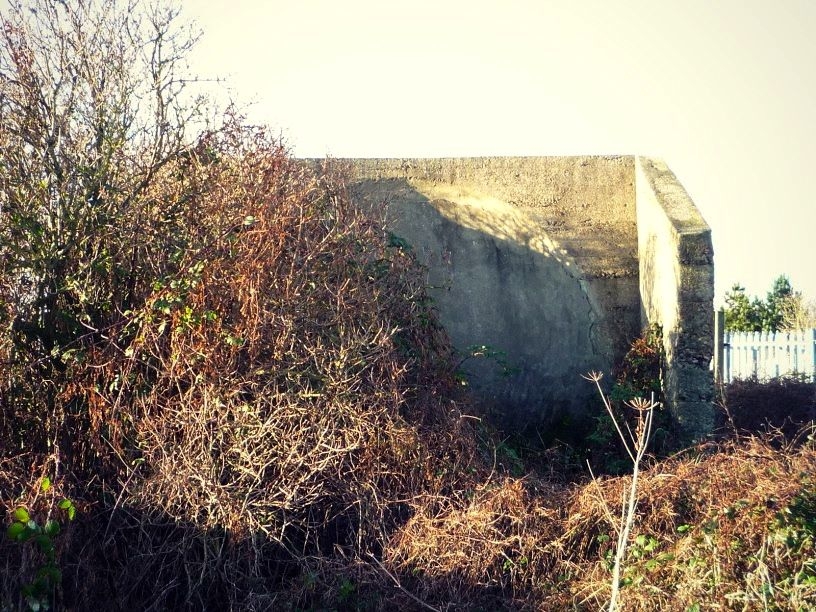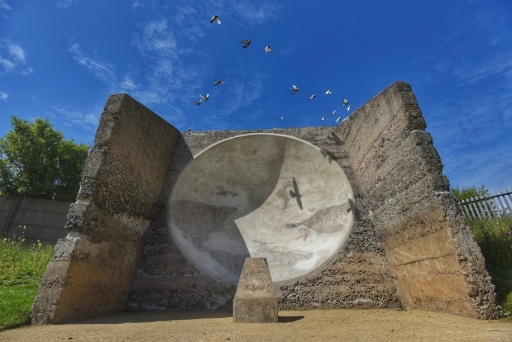A rare example of a First World War air raid warning system has been restored on England’s North Sea coast after many years of neglect.
The acoustic mirror in the Fulwell area of Sunderland was built in the wake of a Zeppelin attack on the city in 1916 which killed more than 20 people.
Described as a ‘long-lost reminder’ of the war on the home front, the four-metre high concrete dish was positioned to guard the approaches to the industrial heartlands of the Tyne and Wear river estuaries.
Using methods learnt in the trenches, it was designed to give a 15 minute warning of approaching enemy airships.
Sound reflected from the concave dish was picked up by microphone and transmitted to an operator wearing headphones.
Fulwell’s acoustic mirror was part of a chain of air raid warning devices on the British coast, and is now one of only four survivors in the north east.
It’s been rescued for future generations by a partnership involving conservationist body Historic England, Sunderland City Council and the UK lottery-funded Limestone Landscapes programme.
 The mirror before restoration: it was put on Historic England’s ‘Heritage at Risk’ register (Photo © Historic England)
The mirror before restoration: it was put on Historic England’s ‘Heritage at Risk’ register (Photo © Historic England)
Councillor John Kelly, Sunderland’s Portfolio Holder for Culture, said: “Fulwell Acoustic Mirror is a very rare, long lost reminder of the Home Front in the north east during the First World War.
“There are only a handful of these mirrors remaining, so it’s an incredibly important part of our military history and it’s especially fitting that this work has been completed at a time when we are commemorating the centenary.
Mr Kelly said the mirror’s restoration, together with new interpretative material, would make it more accessible to local people, schools and vistors as a heritage tourist attraction and educational resource.
Sunderland City Council secured funding from Historic England in 2013. This, together with money allocated to Limestone Landscape Partnership from the UK Heritage Lottery Fund, allowed the £68,000 project to go ahead.
Kate Wilson, Historic England’s Principal Adviser for Heritage at Risk for the North East, said: “This has been a very successful partnership to repair and reveal the mirror’s history. It will take a step towards making sure the acoustic mirror will survive for many more years to come and come off our Heritage at Risk register.”
Germany started using Zeppelin airships to bomb Britain in 1915. Read more in Centenary News about the raids on Great Yarmouth and London.
Fulwell Acoustic Mirror was unveiled on June 9th 2015. Sited 300 metres north-west of Fulwell Windmill, access to the site is via a track off the A1018 Newcastle Road behind the VW garage next to Fulwell Mill.
Source: Historic England
Images courtesy of © North News and Pictures/Historic England
Posted by: Peter Alhadeff, Centenary News
